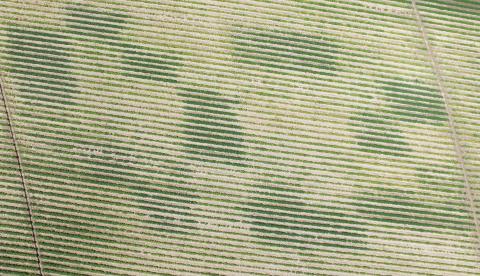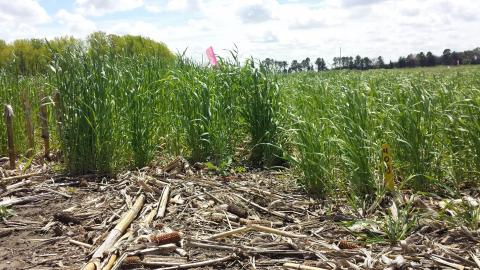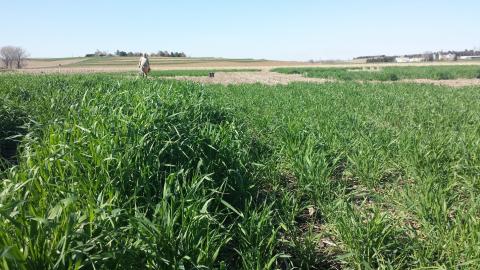
Cover Crop and Crop Residue Management: How Does it Affect Soil Water in the Short and Long Term?
August 13, 2018
How you manage your soil today impacts its productivity tomorrow. This article focuses on how plant residue management and cover crop use affect water infiltration and plant available water.
Corn Residue Removal and CO2 Emissions
February 26, 2018
University research looking at CO2 emissions from two types of residue removal (baling and grazing) compared with a control treatment found little day-to-day impact; however, when looking at cumulative data for the whole year, grazing did appear to affect cumulative CO2 emissions in irrigated crop-livestock systems. This data represents the first year of this study.
Cover Crop and CO2 Emissions
February 26, 2018
Do cover crops affect CO2 emissions from the soil and if so, under what conditions? These were among the questions addressed by university researchers monitoring CO2 emissions from cereal rye cover crops in irrigated and dryland no-till continuous corn treatments.
Coal Combustion Residue: A Potential Soil Amendment
February 22, 2018
University of Nebraska researchers applied char, a by-product of sugar beet processing, at three sites to study its effect on soil properties.
Cover Crop Productivity In Corn And Soybean Systems
September 7, 2017
University researchers share results from their study of cover crops planted pre- and post-harvest and in seed corn at three sites: Clay Center, Concord, and Mead.
Implementation of Cover Crops in Corn and Soybean Systems in Nebraska
November 29, 2016
A short review of cover crop research conducted at four University of Nebraska research fields (two irrigated, two dryland) to study the feasibility and impact of winter cover cropping on soil quality, soil water, and crop yields in corn-soybean systems. Objectives were to quantify cover crop emergence, fall and spring biomass production, soil water changes, soil chemical and physical property changes, and crop yields.
Biomass Production of Winter Annual Cover Crops in Corn and Soybean
August 11, 2016
Rye was the leading biomass producer in the first two years of a four-year study exploring whether winter cover cropping in no-till corn and soybean systems in Nebraska can benefit soil quality despite their short growing season.






